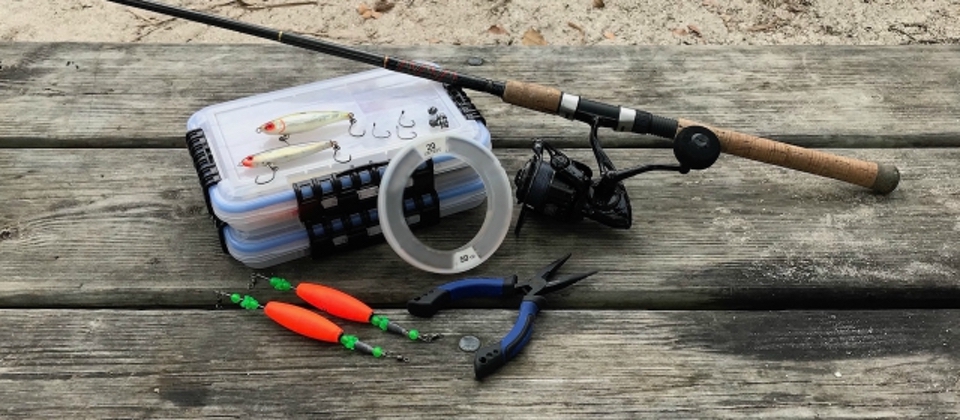Fishing might seem like an intimidating sport. When it comes to fishing learning the basics first will make you a well-rounded, confident angler. You don’t need a big boat and fancy gear to learn how to fish. We’re breaking down the essential fishing basics for beginners.

When you first begin fishing learning the basics of gear and tackle may be challenging, but will become easier with time.
A rod and reel are the tools of an angler’s trade. Look for a spinning rod and reel combo with a 6’ to 7’ light to medium action rod and a 1000 to 3000 size reel. This setup will work for most freshwater or inshore saltwater fishing scenarios from bass and trout to red drum and small tarpon. Fishing equipment for beginners can be found at your local sporting goods retailer and are fairly inexpensive.
There are two popular types of fishing line: monofilament and braided line. A 6 to 10-pound test monofilament is a good option for beginners as it is durable, makes for great casting and is more cost effective. You’ll also need 10 to 20-pound fluorocarbon leader which is abrasion resistant and nearly invisible to fish underwater.
Remember that quality hooks are worth investing in. The size of the hook depends on the size of your bait. There are many styles of hooks with different benefits, but a circle hook will work for most types of live bait. When you learn to fish, you’ll quickly realize that split shot sinkers are an important item to add to your tackle box. They are small lead weights that will help sink your bait in a strong current or give you distance in your cast. Also, use a bobber to float your line, giving your bait a more natural appearance to hungry fish. It is also an indicator of a bite when the bobber submerges below the water.
Lastly, but equally important, live bait or artificial lures are what will attract the fish to bite your hook. Use bait that is local to where you are fishing or lures that resemble baitfish in your area.

Use a simple tackle box with multiple compartments to keep your tools and tackle organized. Make sure to pack line cutters as they are necessary for cutting the lines when rigging your rod.
When handling fish, it’s best to use a landing net to scoop your catch out of the water to avoid harming the fish. Then, use needle nose pliers to remove the hook safely and easily from the fish’s mouth.
The Women's Outdoor News, aka The WON, features news, reviews and stories about women who are shooting, hunting, fishing and actively engaging in outdoor adventure. This publication is for women, by women. View all posts by The WON